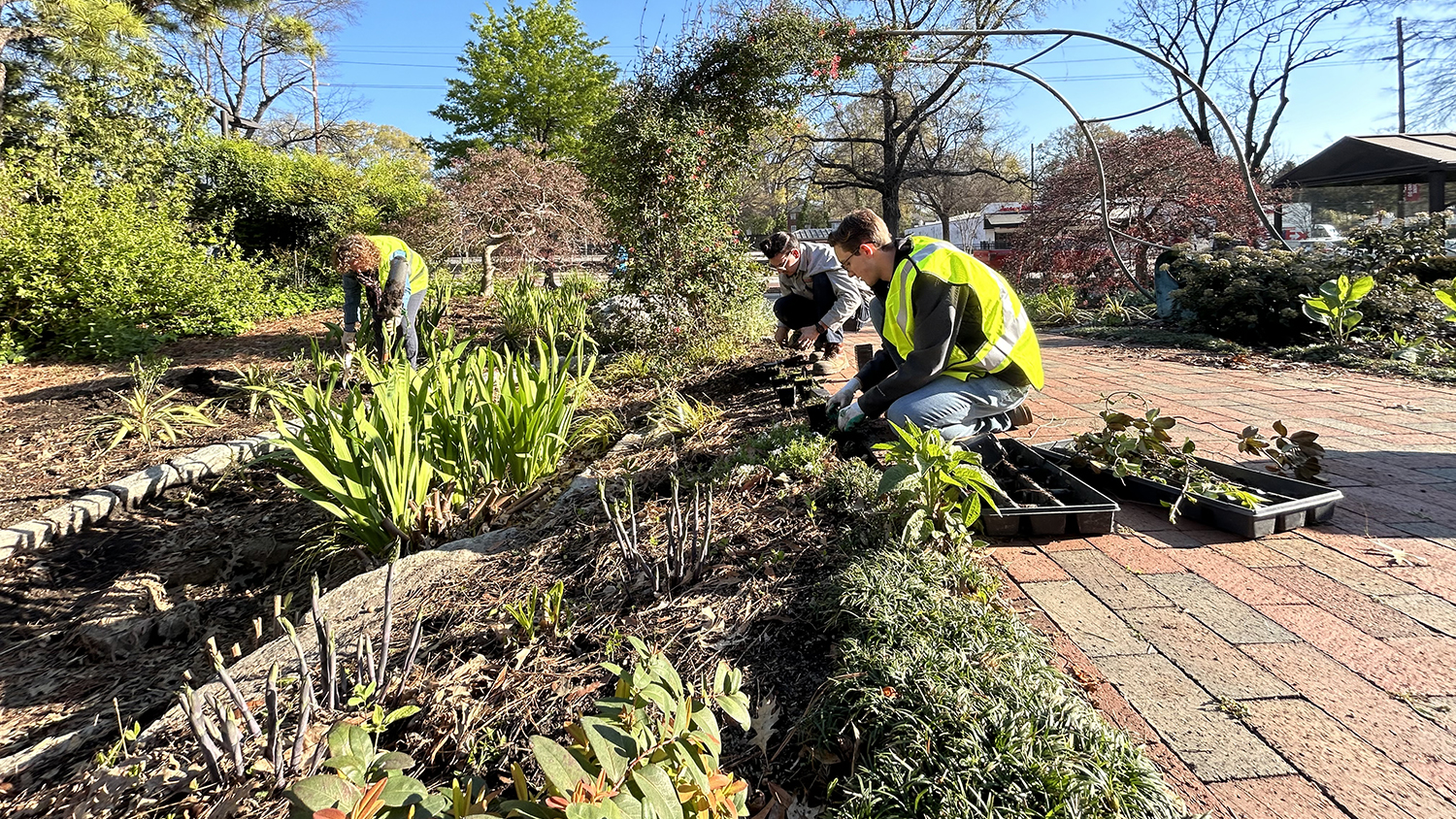‘Scientists in the Classroom’ brings science to elementary school
Third-graders at West Smithfield Elementary School were all abuzz recently over the opportunity to take their classroom outdoors to study plants, insects and soils. And N.C. Cooperative Extension agent Amie Newsome dressed in a bee costume was the center of attention, as she shared information about insects with the eager students.

Newsome and four other local extension and conservation professionals were on hand for some serious science lessons, all conducted outdoors, using hands-on learning activities. The Scientists in the Classroom program is like an on-campus field trip to help students learn, according to school parent and program coordinator Paula Woodall.
Woodall is a founding member of the College of Agriculture and Life Sciences Alumni & Friends Society and serves on the group’s Past President’s Council. She is also a member of the N.C. Agricultural Foundation and is a past member of the N.C. State Alumni Board.
Woodall, who earned a bachelor’s degree (’86) in agronomy and a master’s degree (’98) in management from N.C. State, is senior agribusiness development officer for First Citizens Bank & Trust Co. in Smithfield, one of only four such positions in North Carolina. As a parent at the school, Woodall saw that the science teaching program needed help, and she volunteered.
Woodall has organized several science education programs for the school, and frequently she has turned to N.C. State faculty members as resources. N.C. State faculty members who participated in a rainforest program for second graders included Clyde Sorenson, entomology; Sharon Ruth Ramsey, food, bioprocessing and nutrition sciences; and George Place, crop science and the College’s Herpetology Club. Cooperative Extension staff brought in animals for a first-grade science program. Science programs are also offered during two-week quarterly breaks in the school’s modified year-round schedule.
Principal Chad Jewett said the hands-on science programs have helped in many ways. Since the school began offering more hands-on science, fifth-graders’ end-of-grade science test scores have improved by 42 percent.
“Teachers keep asking for hands-on learning, and we’ve always turned to N.C. State to get it,” Jewett said. “This is a very beneficial way for kids to learn. These programs help kids to experience things they might never experience otherwise.”
Johnston County’s Extension Director Bryant Spivey said the county’s Extension agents are frequently involved in school programs. On the day of the West Smithfield program, Agriculture Agent Tim Britton was at nearby Smithfield-Selma High School conducting a program on tractor safety. 4-H Extension Agent Lori McBryde reaches more than 1,000 local elementary school students through the 4-H embryology program each year.
At the West Smithfield Elementary School program, Horticulture Extension Agent Shawn Banks showed students the impact that essentials like sunlight, nutrients and water have on plant health. He showed students how plants deprived of these growth essentials are not as strong and healthy as those that are exposed.
Representatives of the local Natural Resource Conservation Service were also on hand to offer lessons. James Massey, soil and water conservation district director, demonstrated the use of an auger to reveal the different layers of sedimentation below the soil’s surface. Students took turns turning the auger until the core sample was obtained.
Eddie Humphrey, natural resource conservationist, led students as they acted out the roles of different types of soil in a pot and how they interact with water. And Jerry Raynor, district conservationist with USDA- NCRS and CALS Alumni & Friends Society board member, led students in mixing soil, water and alum in plastic bottles so they could see over time how layers of sediment separated in the bottles. The classes danced vigorously to shake up the bottles, creating a chocolate milk-like liquid.
Though the students enjoyed the day, each activity was designed to teach specific lessons. Newsome’s insect program taught students how bees and insects pollinate flowers, the importance of pollination, and the pros and cons of insects found in the soil and on plants. Connecting the activities to the state’s education goals helps ensure that students learn the science lessons intended for their grade level, Woodall said.
—Natalie Hampton



